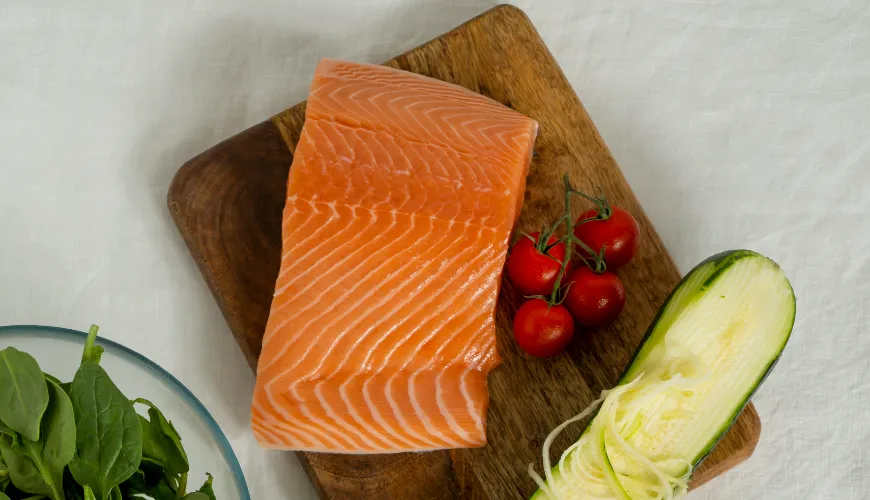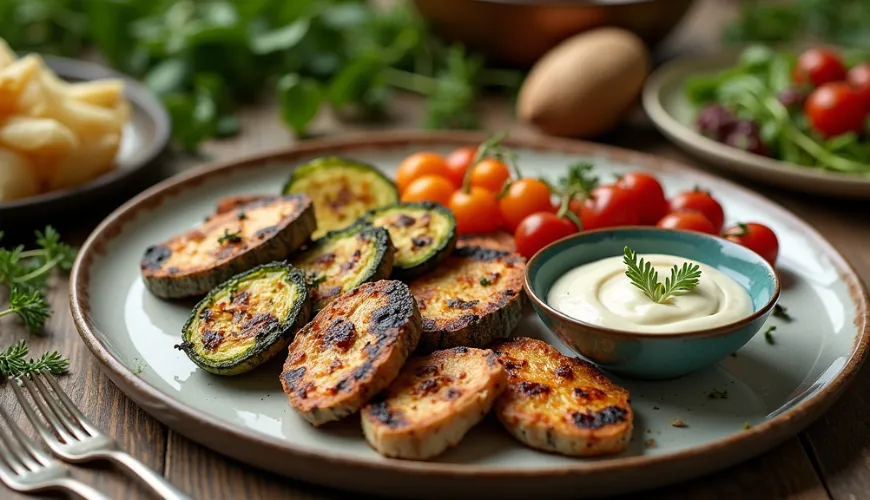
Discover the magic of aioli and try making it at home

Aioli - Creamy Delicacy with a Rich History and Modern Use
At first glance, it may seem like just another sauce from the kitchen table. In reality, aioli is much more than a condiment for fries or grilled meat. This creamy, garlic-infused delight has roots deep in the history of Mediterranean cuisine and today finds its way not only into restaurants but also into home kitchens of people seeking simplicity, flavor, and quality.
Although there are many variations, the basic form of aioli sauce is a fascinating example of how something extraordinary can be created from just a few ingredients. At its core are garlic, olive oil, salt, and egg yolk—a combination that creates a rich, creamy, and slightly spicy experience. And while some might think it's just a variant of mayonnaise, the difference lies primarily in the taste and method of preparation.
How Does Tradition Taste? Aioli in Its Original Form
The word “aioli” comes from the Provençal “alioli,” which is a compound of the words for garlic (alh) and oil (òli). The original recipe for aioli sauce was simple—garlic and olive oil pounded in a mortar, without eggs. This basic version is still used today, especially in Catalonia and some parts of France, where the emphasis is on the distinctive garlic flavor and working with quality olive oil.
In modern cuisine, however, aioli sauce often appears in a milder form that resembles mayonnaise flavored with garlic. By adding egg yolk and sometimes lemon juice, a silky emulsion is created that spreads easily and pairs perfectly with a variety of dishes. Aioli recipe can thus be adjusted to personal taste—some add Dijon mustard, others a bit of chili or herbs like tarragon or parsley.
And it's precisely this variability that is why aioli sauce is increasingly appearing in Czech kitchens as well. While it was once a matter of luxurious restaurants, today it's not a problem to prepare your own aioli at home—and the result is always something special.
Why Do People Love Aioli?
In a time when more people are looking for simple but healthy alternatives to store-bought sauces full of preservatives, aioli is a great choice. Not only do you know exactly what goes into it, but you can also customize the recipe according to your current mood or what you have at home. Whether you use classic olive oil or opt for a milder sunflower oil, you can always expect a rich flavor with a garlic finish that pairs well with fish, meat, vegetables, and bread.
Moreover—and this is important—aioli requires no special kitchen tools. If you have a mortar or blender, you can make it in a few minutes. If necessary, it can even be prepared manually, just with a fork and a bit of patience.
For a better idea of how easy it can be, let's imagine a situation from everyday life. A family is preparing for a weekend barbecue. Instead of ketchup and store-bought tartar sauce, they decide to make something unusual—homemade aioli. Just crush the garlic, add an egg yolk, salt, and slowly whisk in the oil. A few minutes later, they have a sauce with character on the table, which everyone praises.
Homemade Aioli: A Simple Recipe Everyone Can Master
The key to success is quality ingredients. The garlic should be fresh, preferably Czech—not the pale and flavorless imported kind. The oil can be virgin olive, but if you prefer a milder taste, opt for rapeseed or sunflower oil.
Basic Aioli Sauce Recipe:
- 1 egg yolk
- 1–2 cloves of garlic (to taste)
- 150 ml olive oil
- a pinch of salt
- a few drops of lemon juice or vinegar
The process is simple: crush the garlic with salt into a paste. Add the egg yolk and gradually, drop by drop, add the oil—ideally while constantly whisking. Finally, season with lemon juice. If you find the sauce too thick, you can add a teaspoon of water.
And why is it important to add the oil slowly? Because it is the slow addition that allows for the formation of a stable emulsion—a creamy consistency that doesn’t separate.
Modern Variations on a Classic
Today's chefs are not afraid to experiment. The basic aioli sauce is like a blank canvas—you can enrich it with various flavors. Popular variations include those with roasted garlic—it is milder, sweeter, and less pungent. Adding saffron is also a great choice, which gives the sauce a golden color and a slightly spicy undertone.
An interesting variant is vegan aioli. Instead of eggs, a mix of aquafaba (chickpea water) and stronger vegetable oil is used. The taste is close to the classic, but it is also suitable for those who avoid animal products.
And what about garlic aioli with cilantro? Or a version with smoked paprika? The possibilities are almost limitless—just don't be afraid to experiment.
Where Aioli Fits and How to Serve It
Aioli sauce is as much at home at a tapas party as it is at a Sunday lunch. It pairs beautifully with roasted potatoes, grilled vegetables, fish, or as a dip for fresh baguette. In some Mediterranean countries, aioli is served even with festive dishes, such as stewed cod, vegetable purées, or seafood.
If you're looking for a healthier alternative, try aioli as a substitute for classic dressing in salads. It’s a tasty and nutritious alternative without added sugars and preservatives.
But let's not forget one thing—since aioli contains raw egg yolk, it's important to follow basic hygiene rules. Use fresh eggs and store the sauce in the refrigerator, ideally no longer than 2 days.
Aioli as Proof that Simplicity is Beautiful
At a time when we are surrounded by an overwhelming array of flavorings, sauces, and semi-finished products, returning to simple recipes is somewhat liberating. Aioli shows that with a few fresh ingredients, you can create a sauce with a distinctive flavor and character.
And as the famous French chef Michel Bras said: “Real cooking begins where we respect the ingredients.” Aioli is proof of that.
So why not prepare something fragrant and full of flavor next time, instead of store-bought mayonnaise? Aioli isn’t just a sauce. It’s a way to remind ourselves that food can be simple, honest, and yet surprisingly good.

